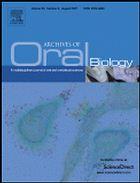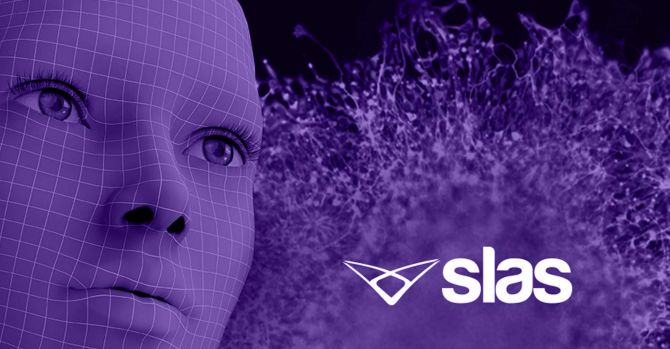Category Archives: Endocannabinoid System
Surprising outcomes in cannabinoid CB1/CB2 receptor double knockout mice in two models of ischemia.

“Although the number of individuals suffering from stroke in the United States and worldwide will continue to grow, therapeutic intervention for treatment following stroke remains frustratingly limited.
Both the cannabinoid 1 receptor (CB1R) and the cannabinoid 2 receptor (CB2R) have been studied in relationship to stroke. Deletion of the CB2R has been shown to worsen outcome, while selective CB2R agonists have been demonstrated to be neuroprotective following stroke.
We tested the hypothesis that CB1/CB2 receptor double knockout would produce significant increases in infarct size and volume and significant worsening in clinical score, using two mouse models, one of permanent ischemia and one of ischemia/reperfusion.
The results surprisingly revealed that CB1/CB2 double knockout mice showed improved outcomes, with the most improvements in the mouse model of permanent ischemia.
Although initial studies of CB1R knockout mice demonstrated increased injury following stroke, indicating that activation of the CB1R was neuroprotective, later studies of selective antagonists of the CB1R also demonstrated a protective effect.
Surprisingly the double knockout animals had improved outcome.
Since the phenotype of the double knockout is not dramatically changed, significant changes in the contribution of other homeostatic pathways in compensation for the loss of these two important receptors may explain these apparently contradictory results.”
https://www.ncbi.nlm.nih.gov/pubmed/29288767
http://www.sciencedirect.com/science/article/pii/S002432051730677X
Decisive role of P42/44 mitogen-activated protein kinase in Δ9-tetrahydrocannabinol-induced migration of human mesenchymal stem cells.
 “In past years, medical interest in Δ9-tetrahydrocannabinol (THC), the major psychoactive ingredient of the Cannabis plant, has been renewed due to the elucidation of the endocannabinoid system and diverse other receptor targets involved in biological cannabinoid effects.
“In past years, medical interest in Δ9-tetrahydrocannabinol (THC), the major psychoactive ingredient of the Cannabis plant, has been renewed due to the elucidation of the endocannabinoid system and diverse other receptor targets involved in biological cannabinoid effects.
The present study therefore investigates the impact of THC on the migration of mesenchymal stem cells (MSCs) which are known to be involved in various regenerative processes such as bone healing.
Collectively, this study demonstrates THC to exert a promigratory effect on MSCs via a CB1 receptor-dependent activation of p42/44 MAPK phosphorylation. This pathway may be involved in regenerative effects of THC and could be a target of pharmacological intervention.” https://www.ncbi.nlm.nih.gov/pubmed/29285308
“Collectively and to the best of our knowledge, this is the first study reporting a promigratory impact of THC on MSCs, which may be an additional mechanism in the complex network of regenerative action of cannabinoids.” http://www.oncotarget.com/index.php?journal=oncotarget&page=article&op=view&path[]=22517&path[]=71182
Expression of cannabinoid 1 and, 2 receptors and the effects of cannabinoid 1 and, 2 receptor agonists on detrusor overactivity associated with bladder outlet obstruction in rats.

“This study investigated changes in the expression of cannabinoid (CB) receptors and the effects of CB1 and CB2 agonists on detrusor overactivity (DO) associated with bladder outlet obstruction (BOO) in rats.
CONCLUSIONS:
CB1 and CB2 receptors, especially CB1, play a role in the pathophysiology of BOO-associated DO, and could serve as therapeutic targets.” https://www.ncbi.nlm.nih.gov/pubmed/29284441
Abnormal cannabidiol confers cardioprotection in diabetic rats independent of glycemic control.

“Chronic GPR18 activation by its agonist abnormal cannabidiol (trans-4-[3-methyl-6-(1-methylethenyl)-2-cyclohexen-1-yl]-5-pentyl-1,3-benzenediol; abn-cbd) improves myocardial redox status and function in healthy rats.
Here, we investigated the ability of abn-cbd to alleviate diabetes-evoked cardiovascular pathology and the contribution of GPR18 to this effect.
Collectively, the current findings present evidence for abn-cbd alleviation of diabetes-evoked cardiovascular anomalies likely via GPR18 dependent restoration of cardiac adiponectin-Akt-eNOS signaling and the diminution of myocardial oxidative stress.”
https://www.ncbi.nlm.nih.gov/pubmed/29274332
http://www.sciencedirect.com/science/article/pii/S0014299917308336
Anti-inflammatory activity of cannabinoid receptor 2 ligands in primary hPDL fibroblasts.

“Approximately 65 million adults in the US have periodontitis, causing tooth loss and decreased quality of life.
Cannabinoids modulate immune responses, and endocannabinoids are prevalent during oral cavity inflammation. Targets for intervention in periodontal inflammation are cannabinoid type 1 and 2 receptors (CB1R, CB2R), particularly CB2R because its levels increase during inflammation.
We previously demonstrated that SMM-189 (CB2R inverse agonist) decreased pro-inflammatory cytokine production in primary microglial cells. The hypothesis of this study was that cannabinoids anandamide (AEA), HU-308 (CB2R selective agonist), and SMM-189 decrease pro-inflammatory IL-6 and MCP-1 production by primary human periodontal ligament fibroblasts (hPDLFs) stimulated with P. gingivalis LPS, TNF-α, or IL-1β.
CONCLUSION:
The effective inhibition of LPS, TNF-α, IL-1β stimulated IL-6 and MCP-1 production by CB2R ligands in hPDLFs suggests that targeting the endocannabinoid system may lead to development of novel drugs for periodontal therapy, aiding strategies to improve oral health.”
Enhancing Endocannabinoid Neurotransmission Augments The Efficacy of Extinction Training and Ameliorates Traumatic Stress-Induced Behavioral Alterations in Rats.

“Exposure to a traumatic event may result in the development of Post-Traumatic Stress Disorder (PTSD).
Endocannabinoids are crucial modulators of the stress response, interfere with excessive retrieval and facilitate the extinction of traumatic memories. Exposure therapy, combined with pharmacotherapy, represents a promising tool for PTSD treatment.
We investigated whether pharmacological manipulations of the endocannabinoid system during extinction learning ameliorates the behavioral changes induced by trauma exposure.
Our findings suggest that drugs potentiating endocannabinoid neurotransmission may represent promising tools when combined to exposure-based psychotherapies in the treatment of PTSD.”
Role of the endogenous cannabinoid receptor 1 in brain injury induced by chronic intermittent hypoxia in rats.

“This study investigated the effect of rimonabant, a cannabinoid receptor type 1 (CB1) antagonist, on calcium/calmodulin dependent protein kinase II (CaMKII) and CB1 in chronic intermittent hypoxia (CIH).
Rimonabant had a protective effect against CIH.” https://www.ncbi.nlm.nih.gov/pubmed/29264962
http://www.tandfonline.com/doi/abs/10.1080/00207454.2017.1420069
Activation of cannabinoid receptor type 2 by JWH133 alleviates bleomycin-induced pulmonary fibrosis in mice.

“Activation of cannabinoid receptor type 2 has been shown to have anti-fibrosis function in skin and heart.
In this research, we aimed to investigate the role of cannabinoid receptor type 2 in pulmonary fibrosis in vitro and in vivo.
Our research indicated that activating cannabinoid receptor type 2 by a pharmacological method might be a potential strategy for pulmonary fibrosis.” https://www.ncbi.nlm.nih.gov/pubmed/29262578
“In conclusion, we demonstrate that activating cannabinoid receptor type 2 by selective agonist JWH133 is a potential strategy for pulmonary fibrosis. Our researches offer a new choice for this life-threatening disease.” http://www.oncotarget.com/index.php?journal=oncotarget&page=article&op=view&path[]=21975&path[]=69664
Discovery of Selective Cannabinoid CB2 Receptor Agonists by High-Throughput Screening.

“The endocannabinoid system (ECS) plays a diverse role in human physiology ranging from the regulation of mood and appetite to immune modulation and the response to pain.
Drug development that targets the cannabinoid receptors (CB1 and CB2) has been explored; however, success in the clinic has been limited by the psychoactive side effects associated with modulation of the neuronally expressed CB1 that are enriched in the CNS. CB2, however, are expressed in peripheral tissues, primarily in immune cells, and thus development of CB2-selective drugs holds the potential to modulate pain among other indications without eliciting anxiety and other undesirable side effects associated with CB1 activation.
As part of a collaborative effort among industry and academic laboratories, we performed a high-throughput screen designed to discover selective agonists or positive allosteric modulators (PAMs) of CB2. Although no CB2 PAMs were identified, 167 CB2 agonists were discovered here, and further characterization of four select compounds revealed two with high selectivity for CB2 versus CB1.
These results broaden drug discovery efforts aimed at the ECS and may lead to the development of novel therapies for immune modulation and pain management with improved side effect profiles.”
https://www.ncbi.nlm.nih.gov/pubmed/29257918

